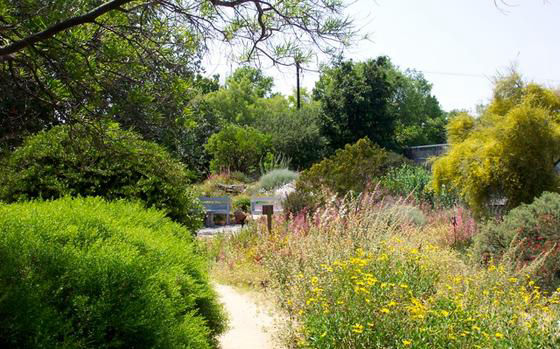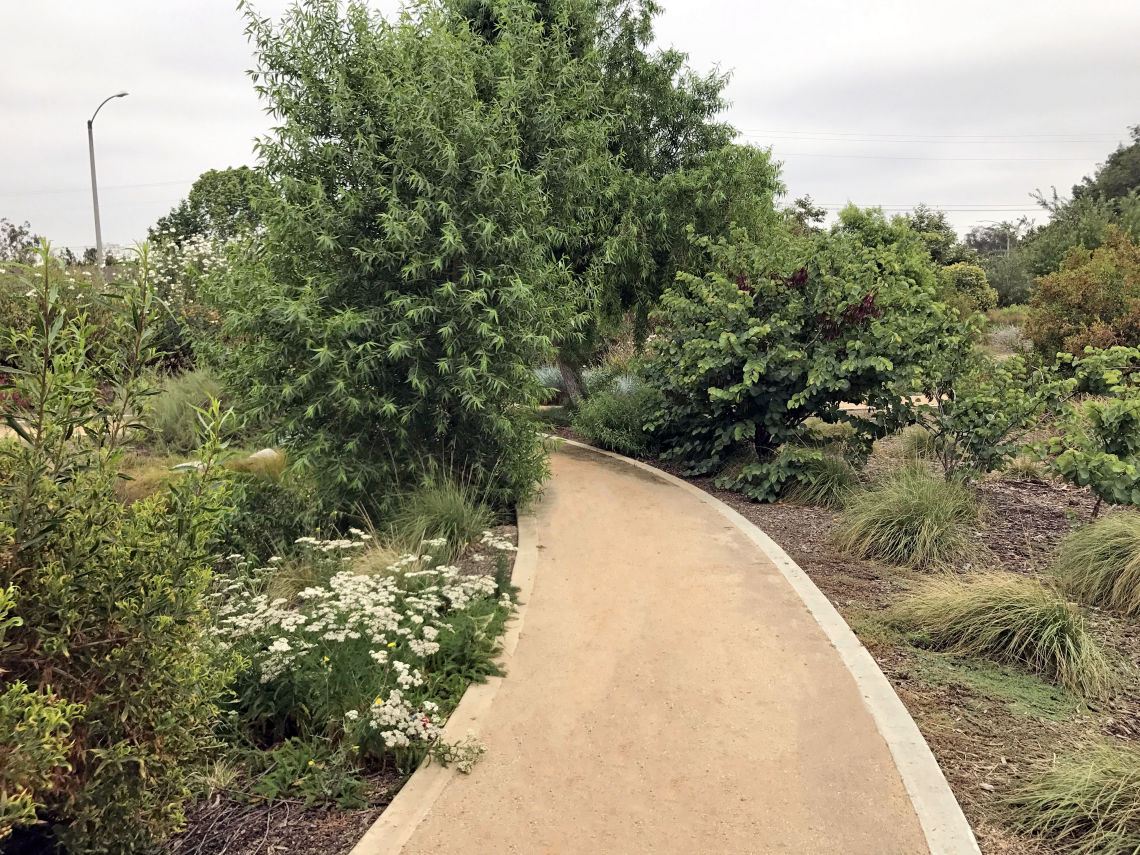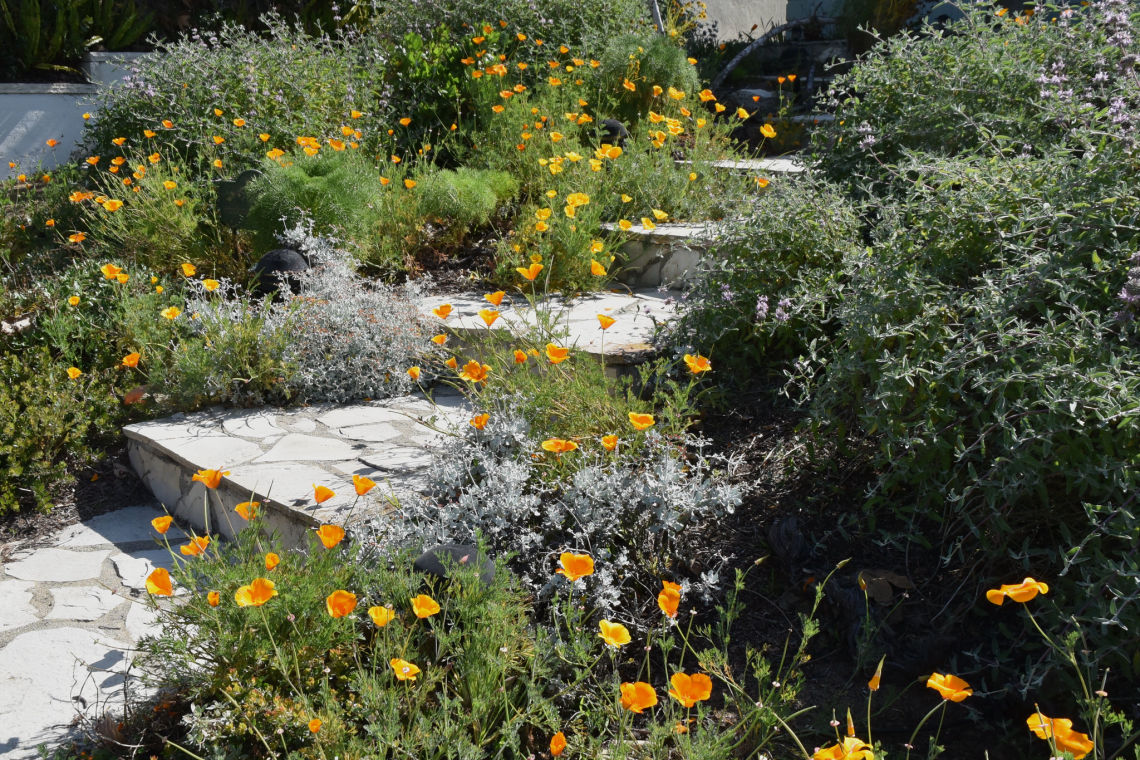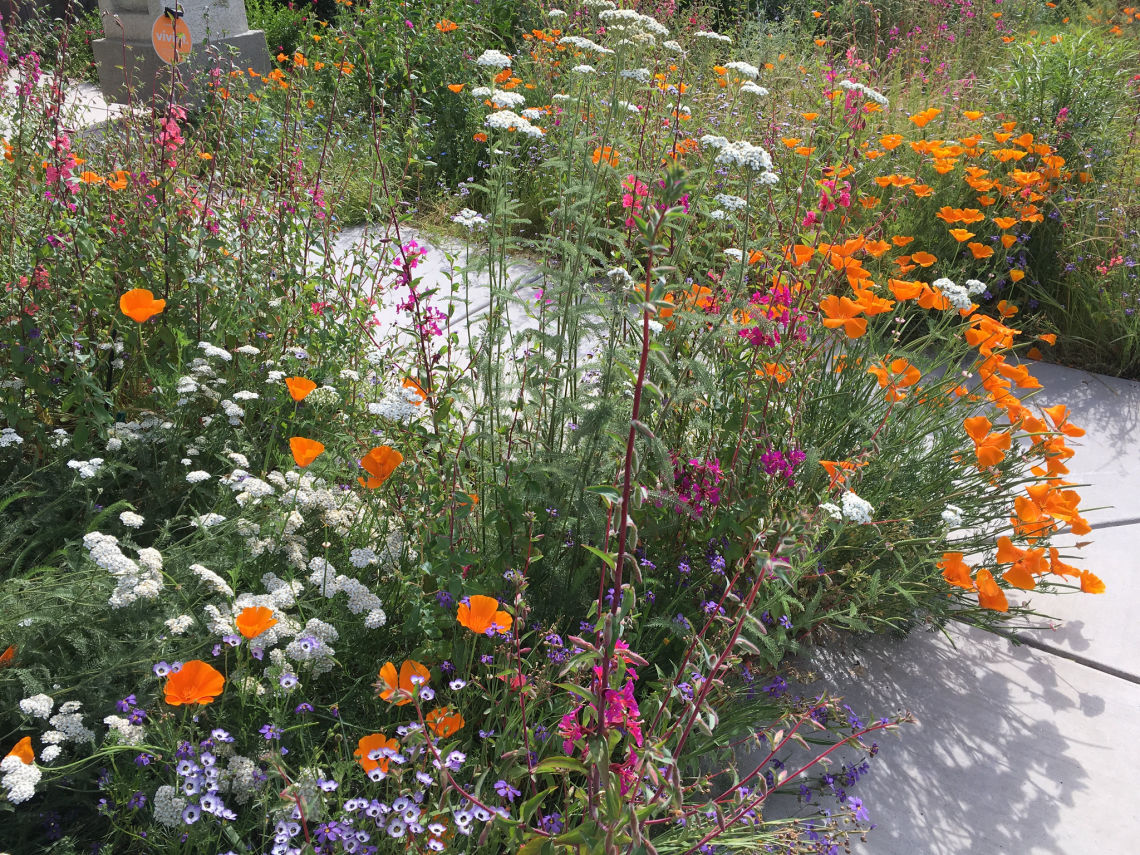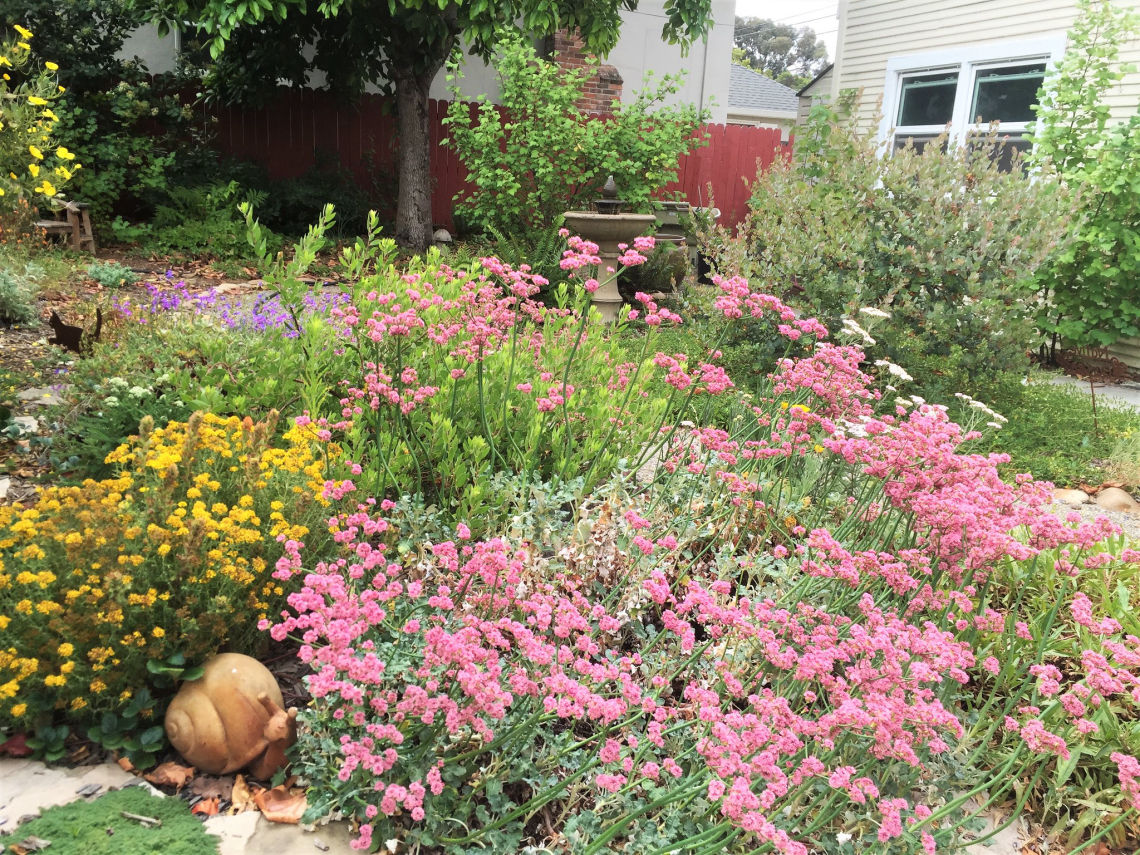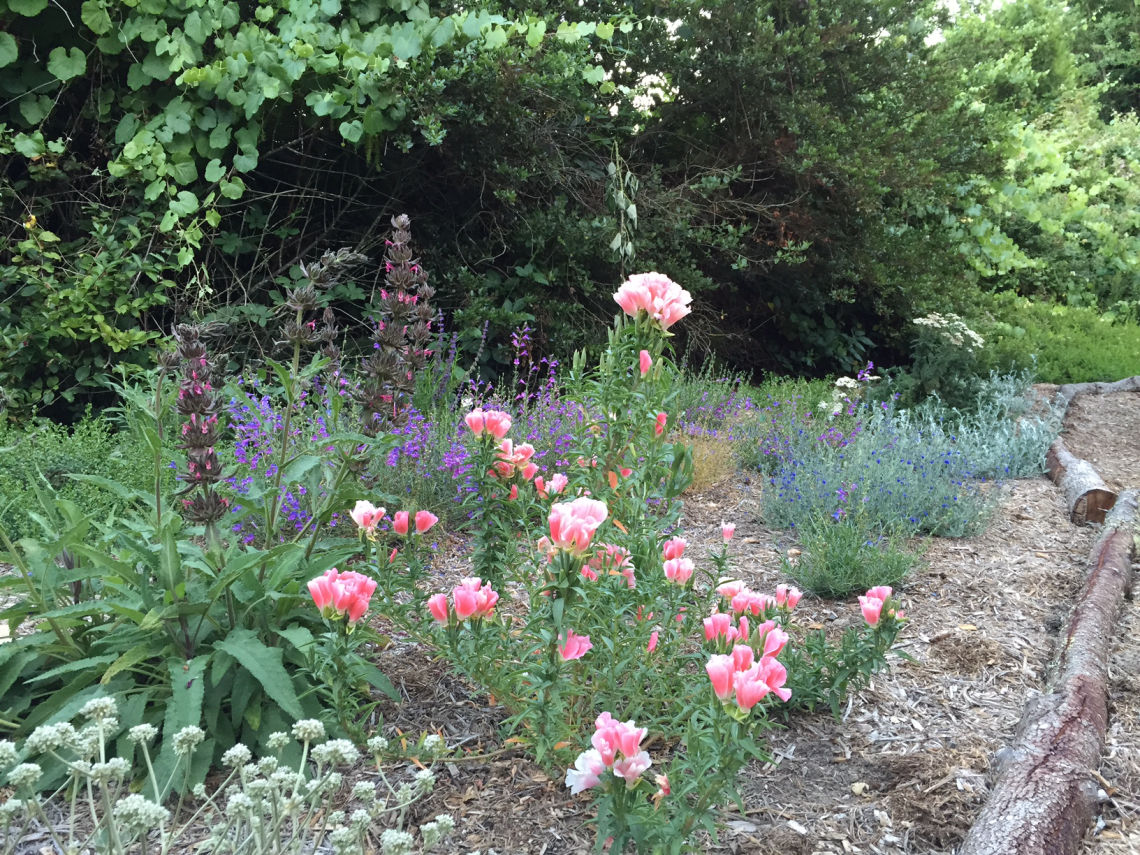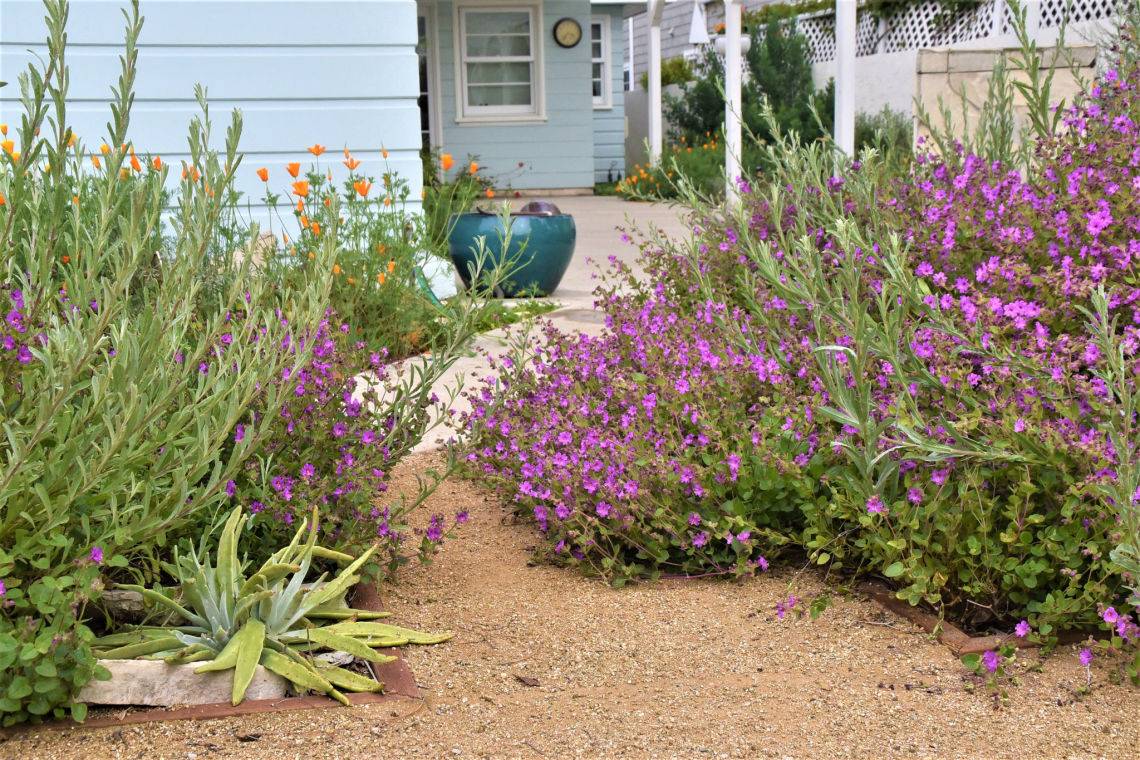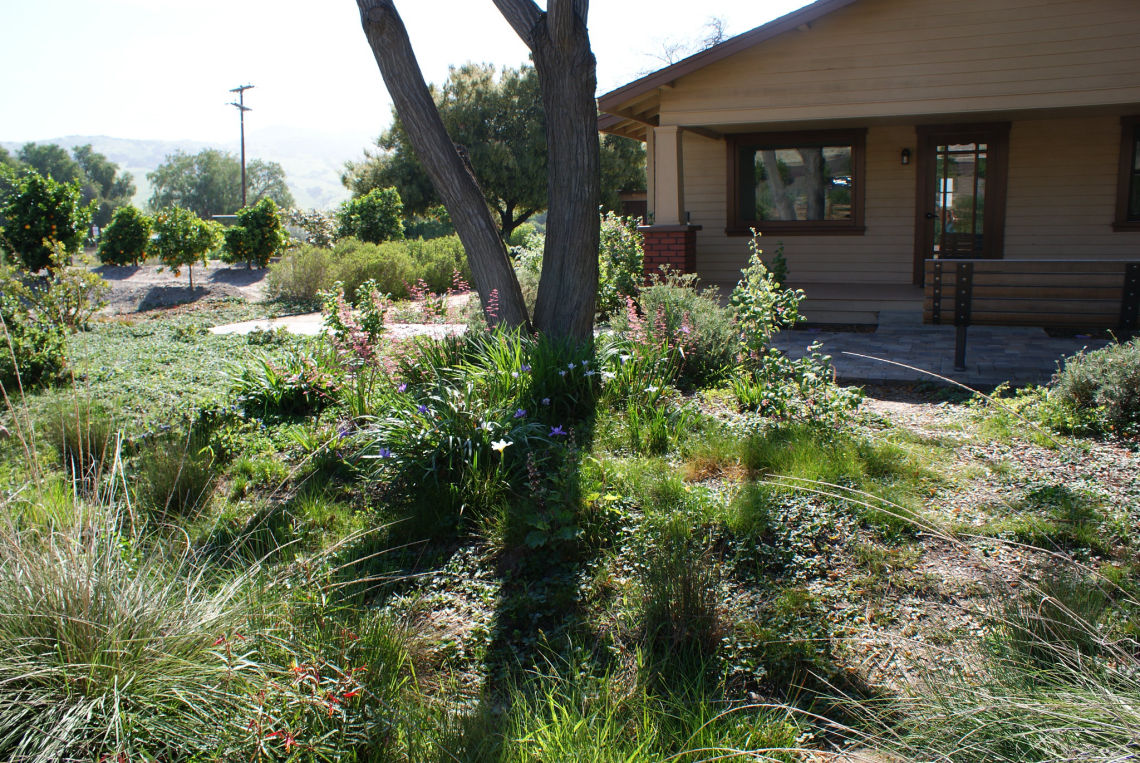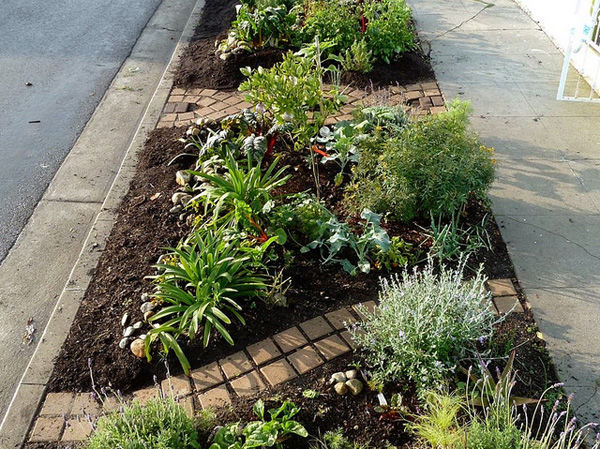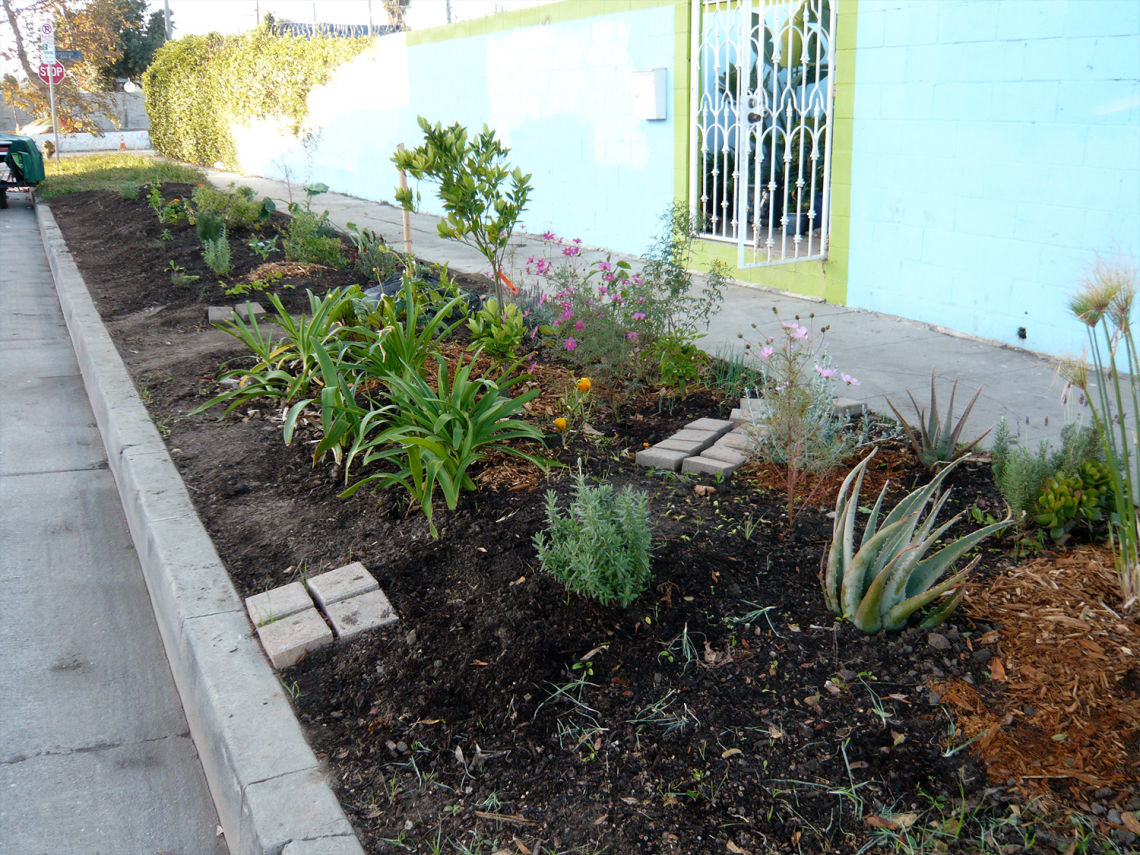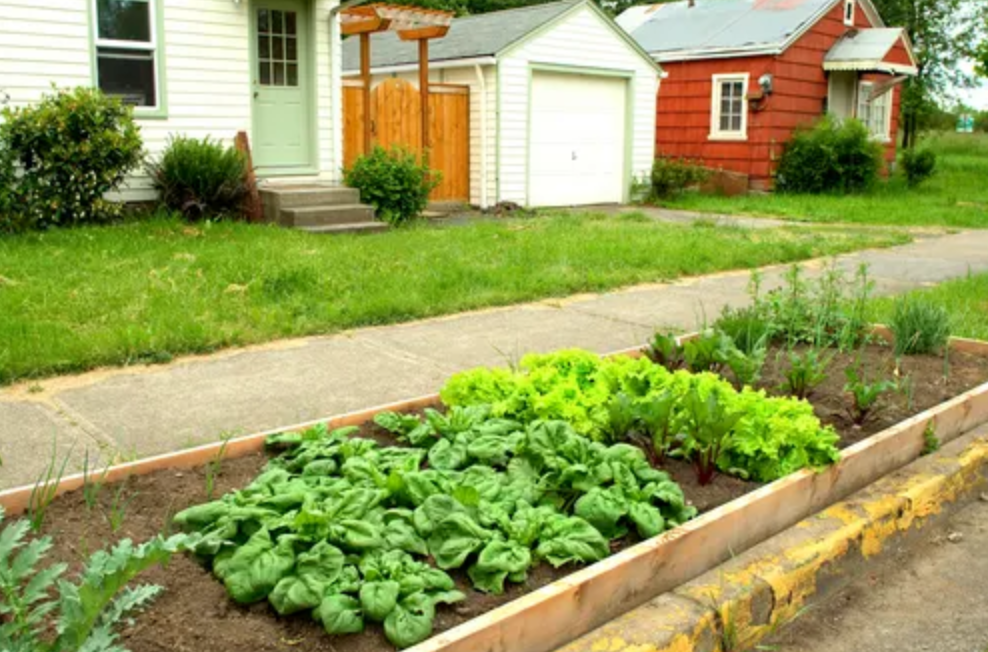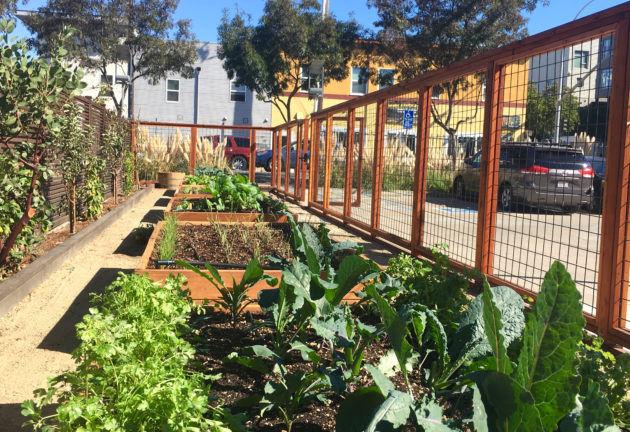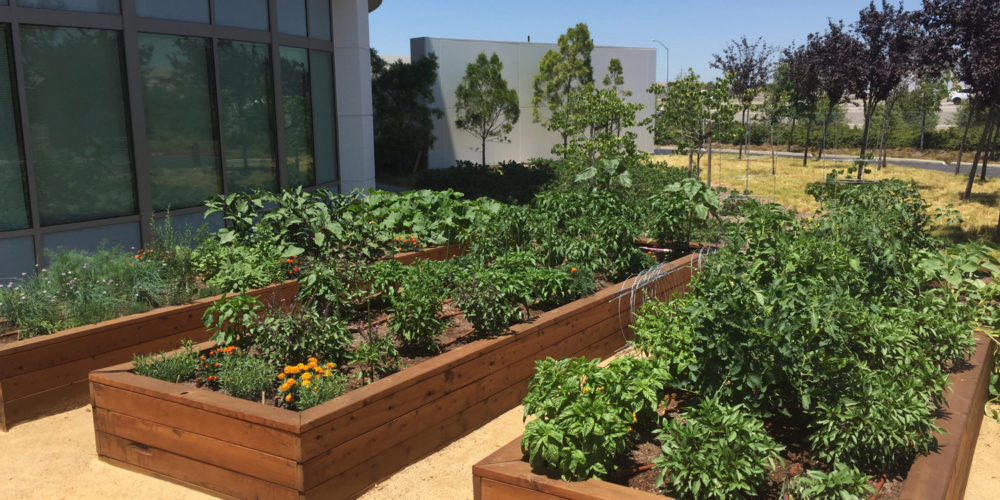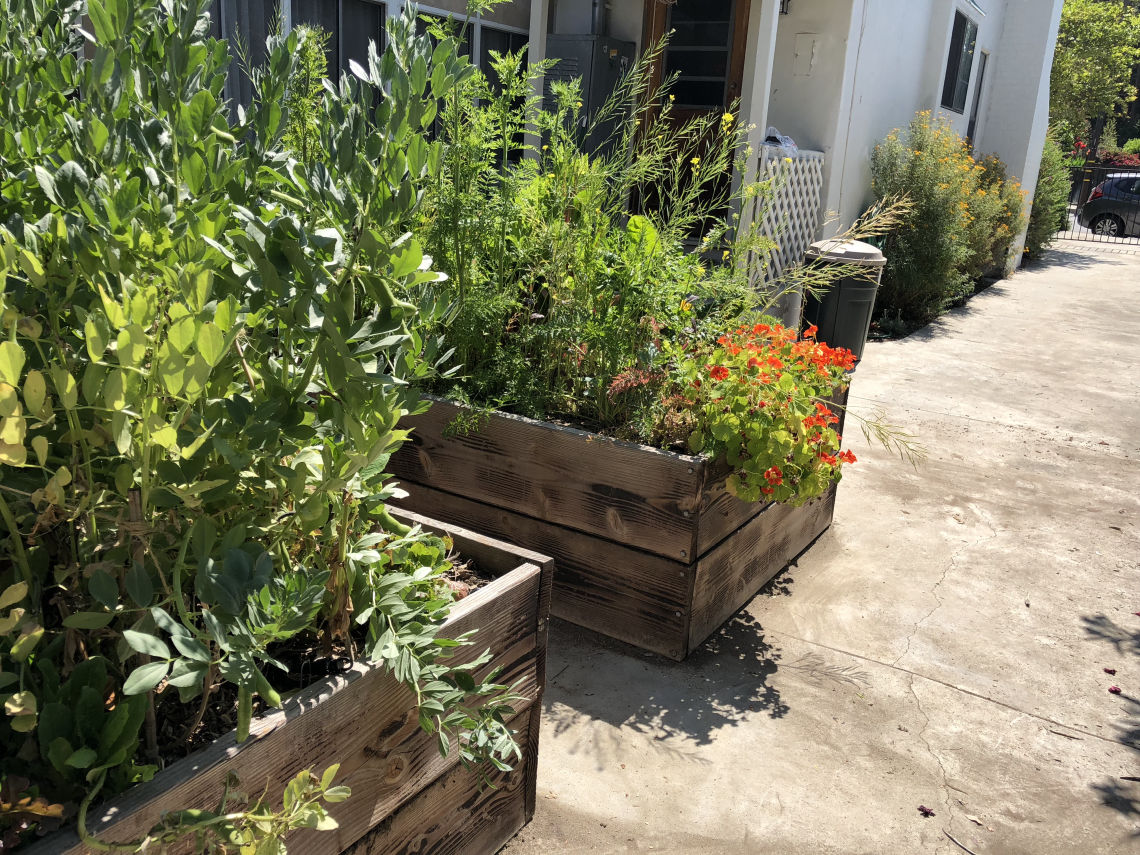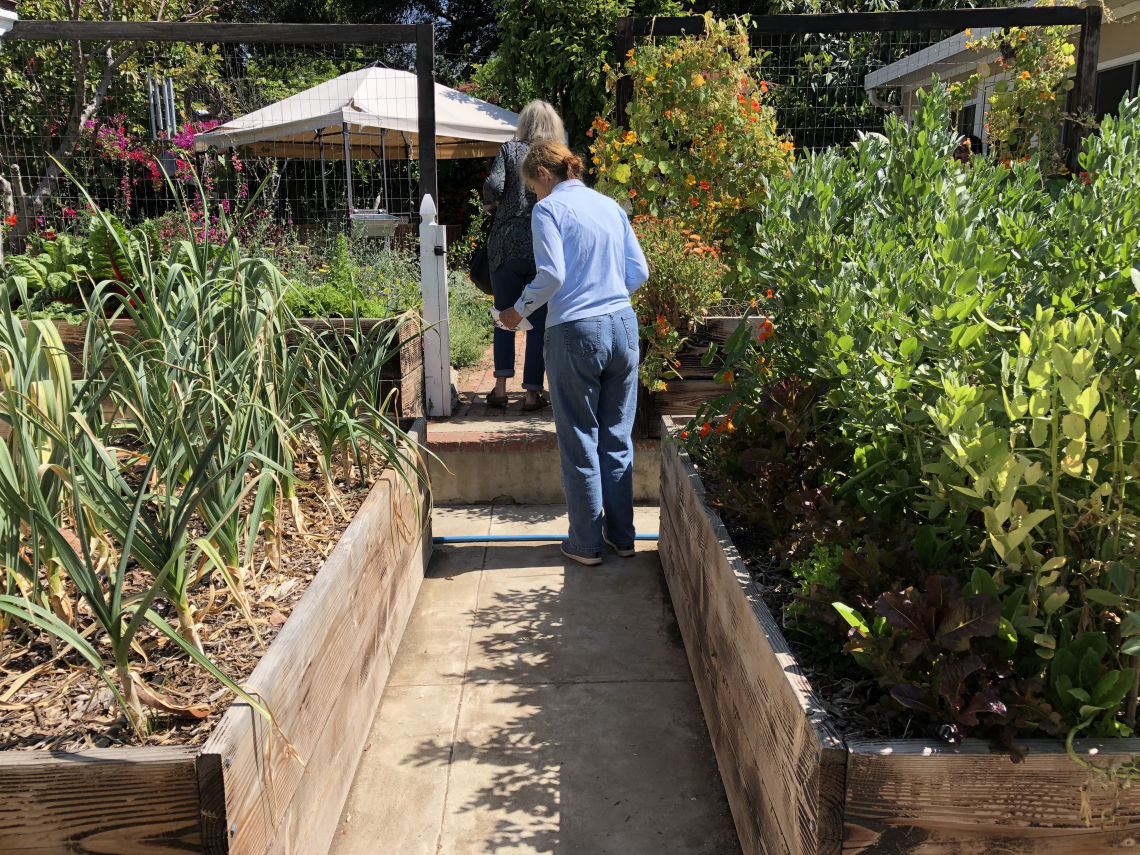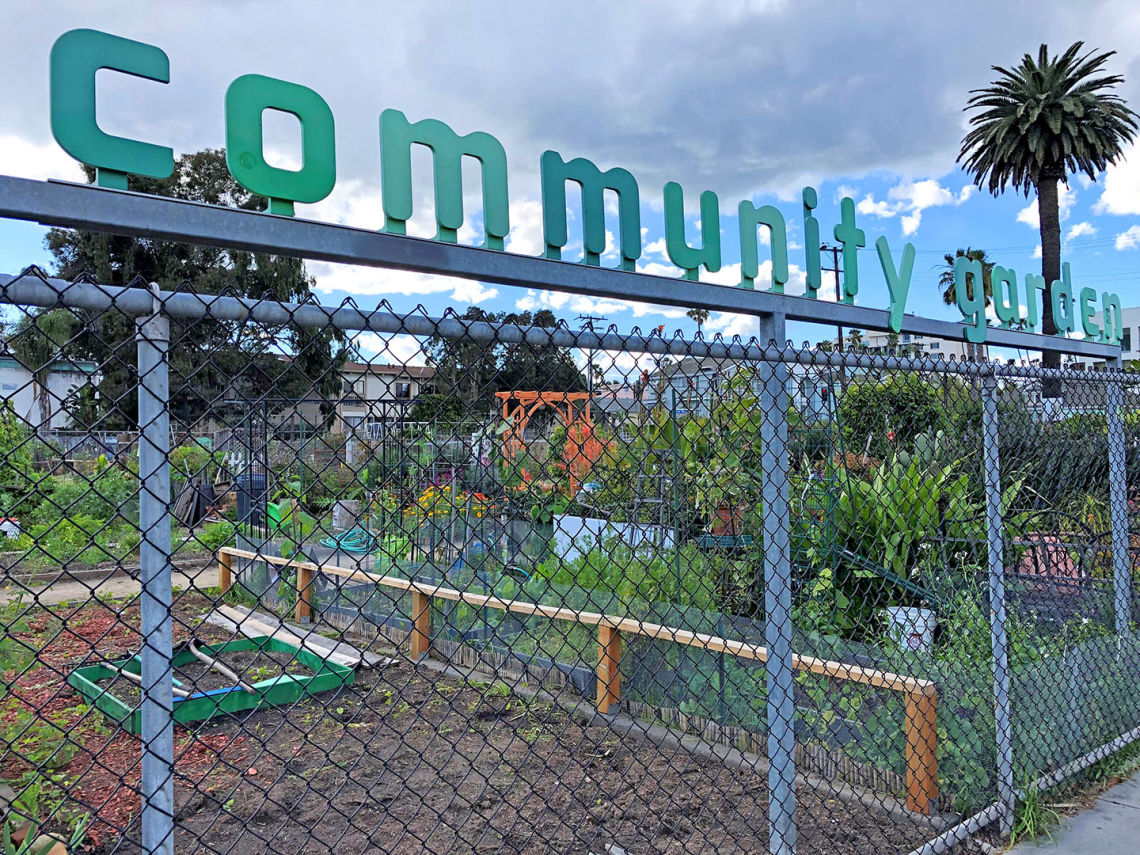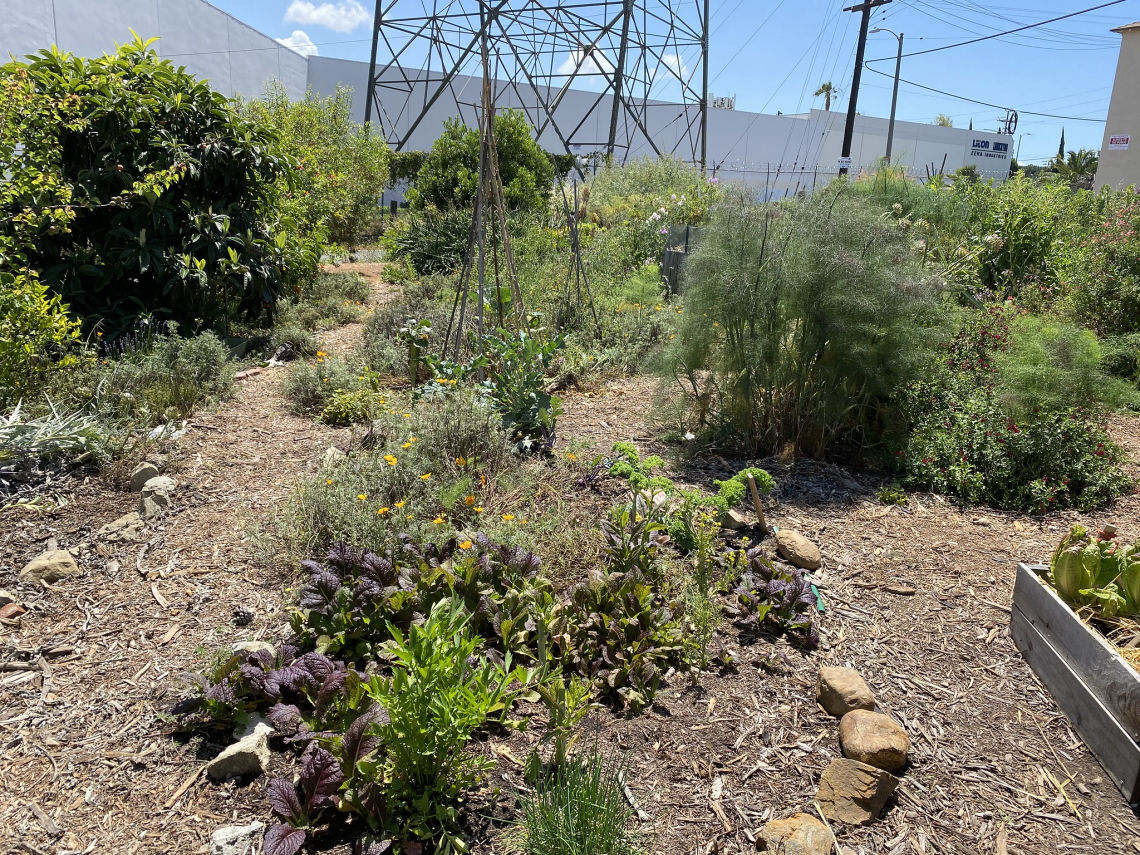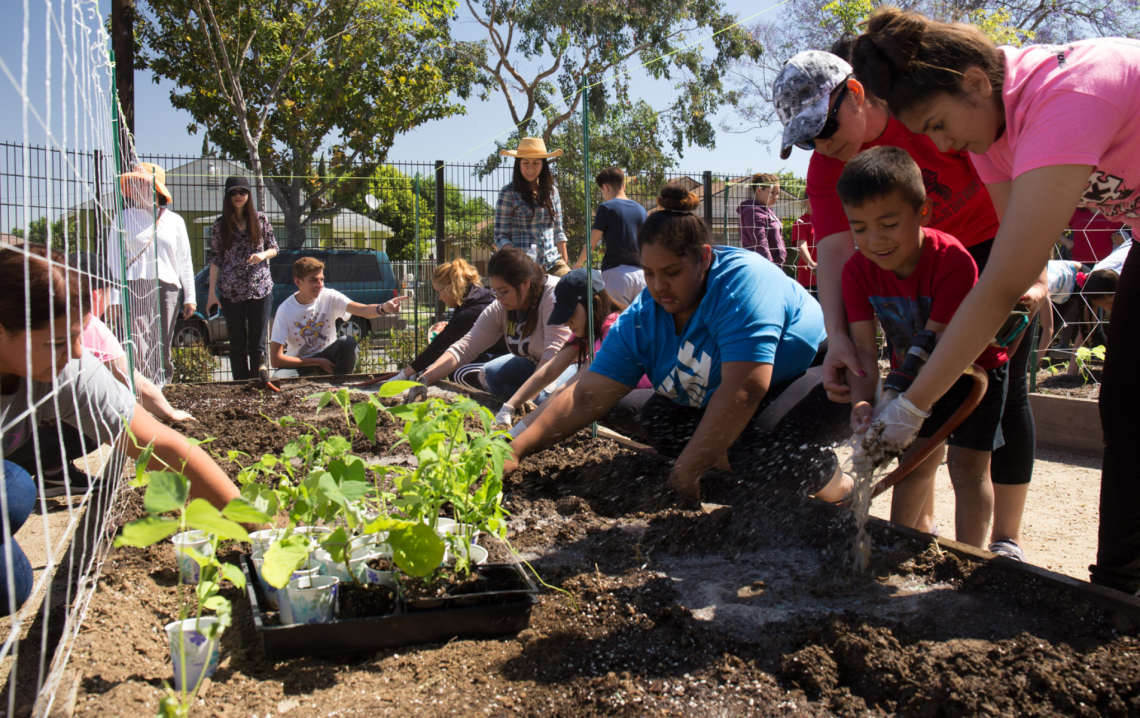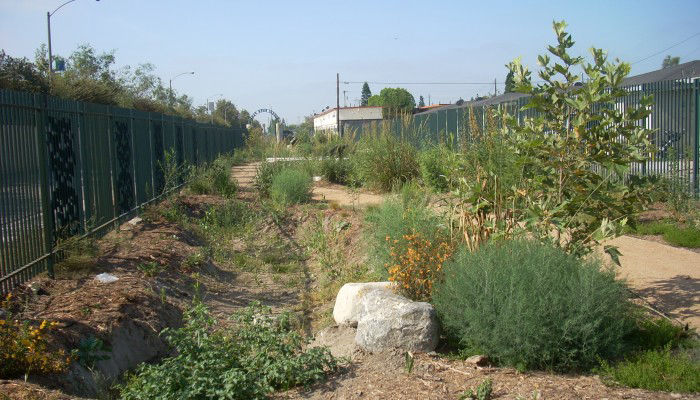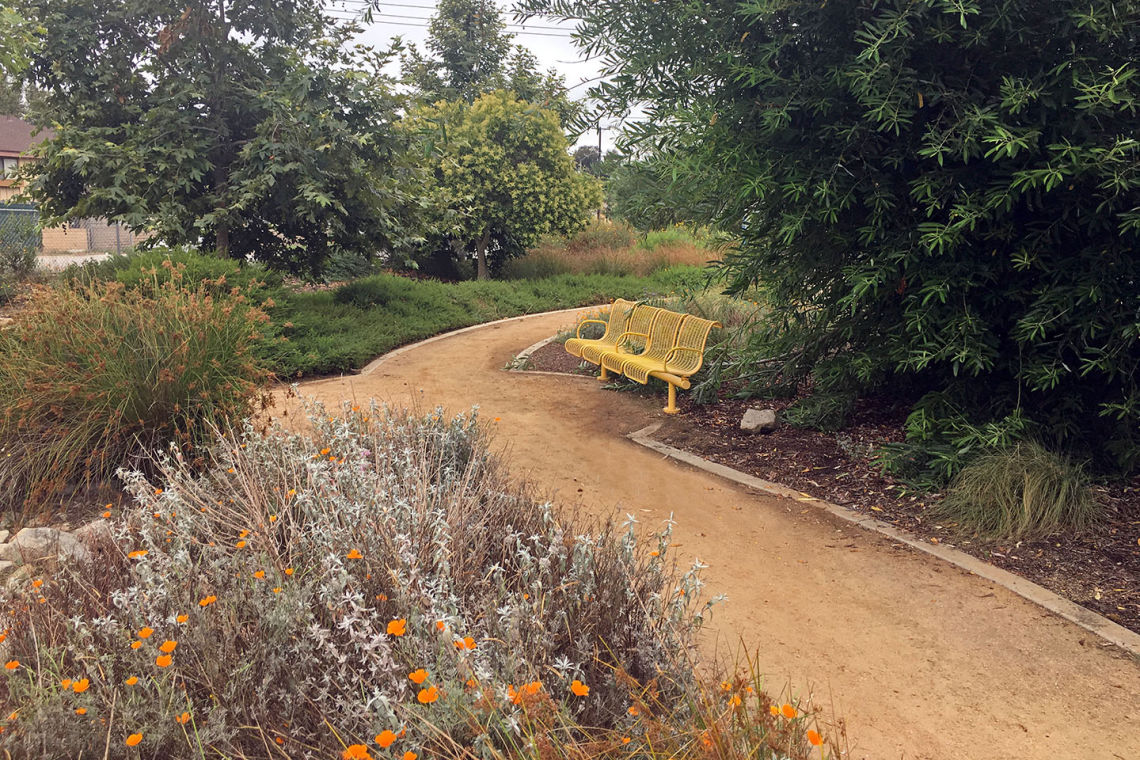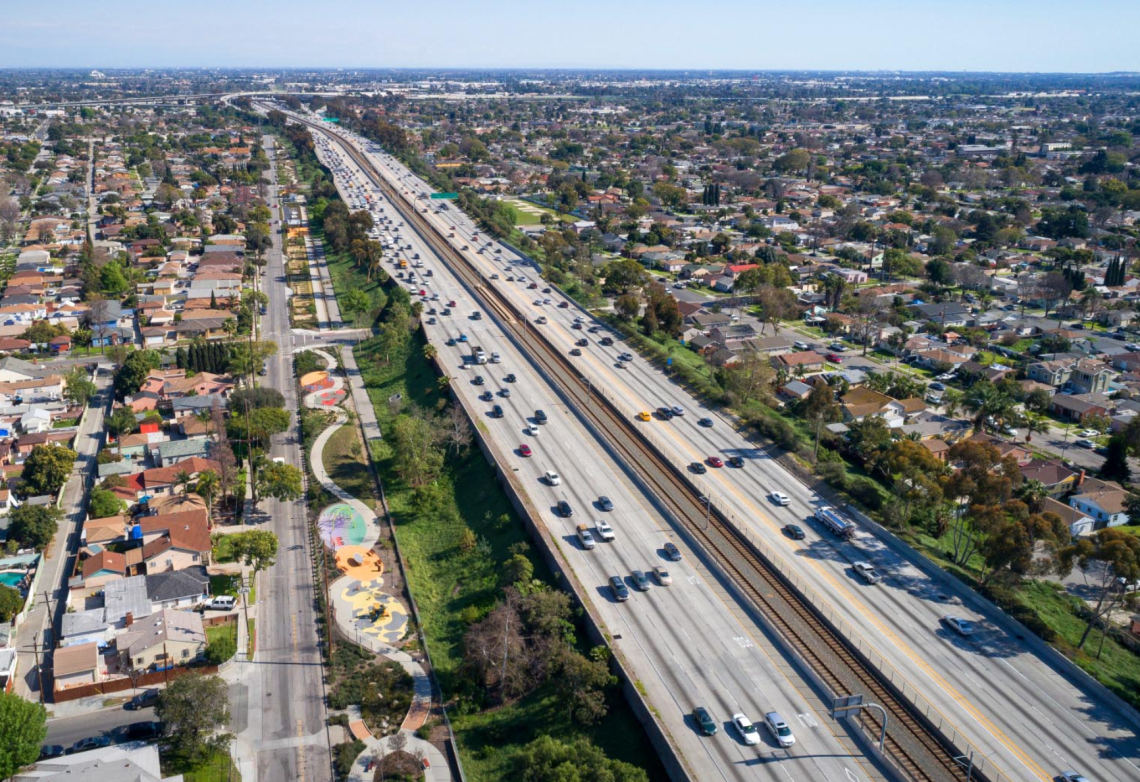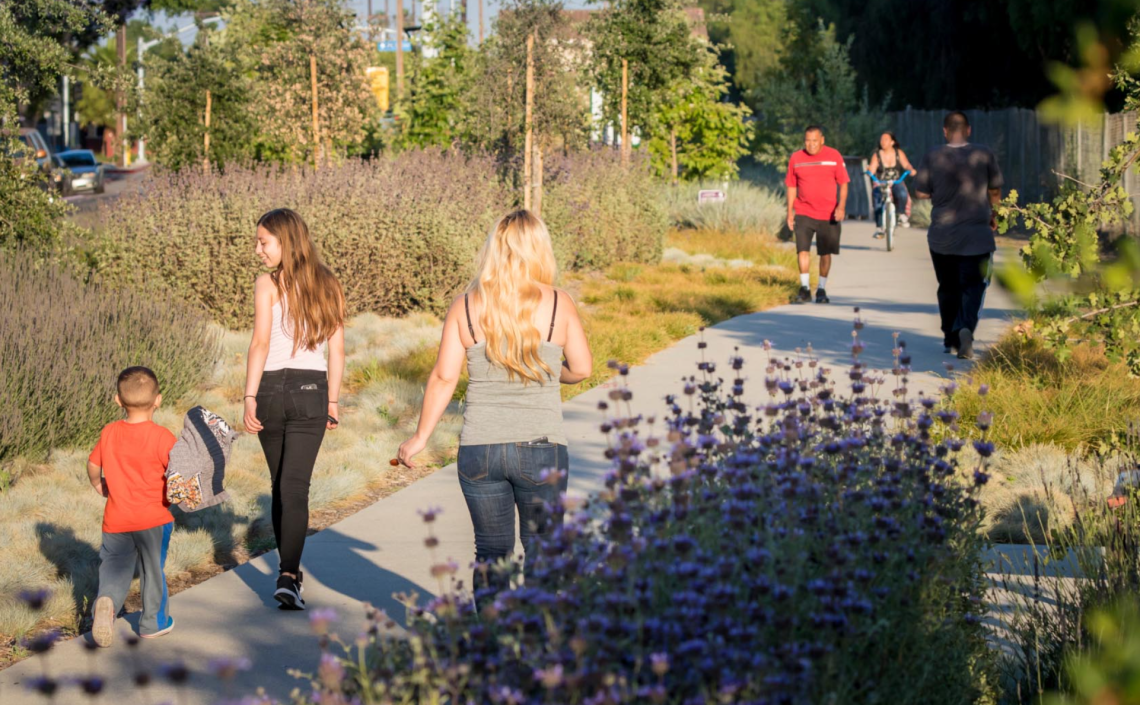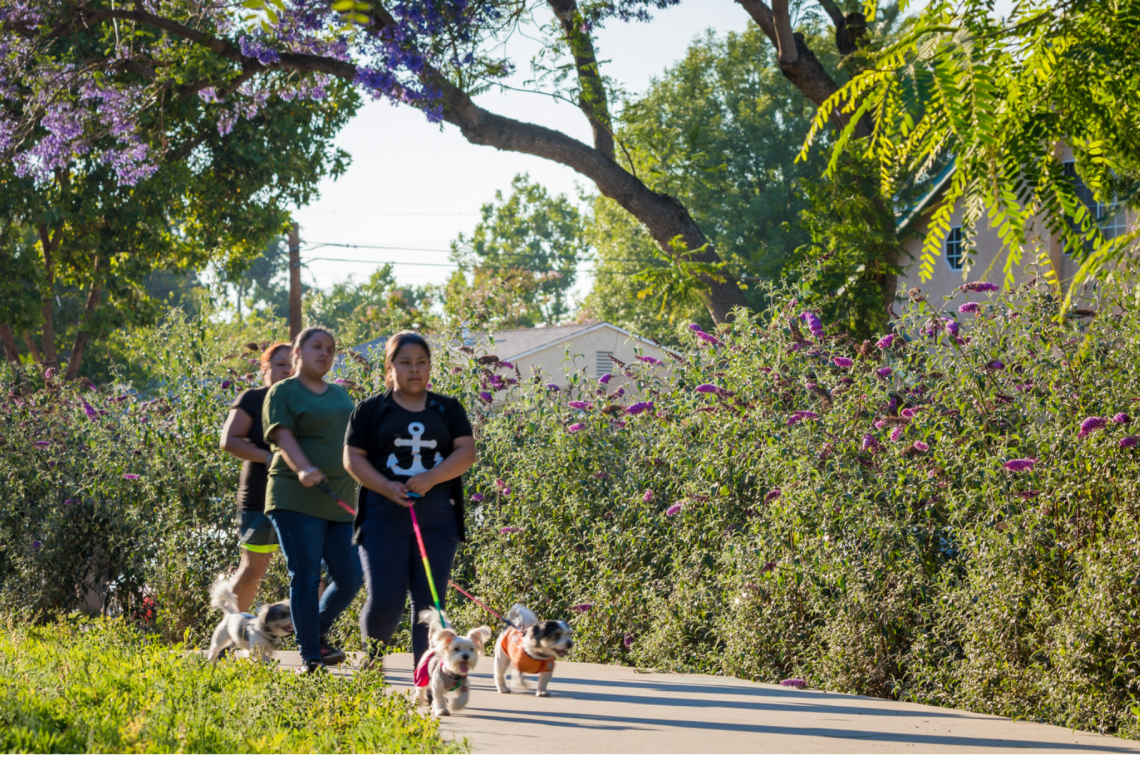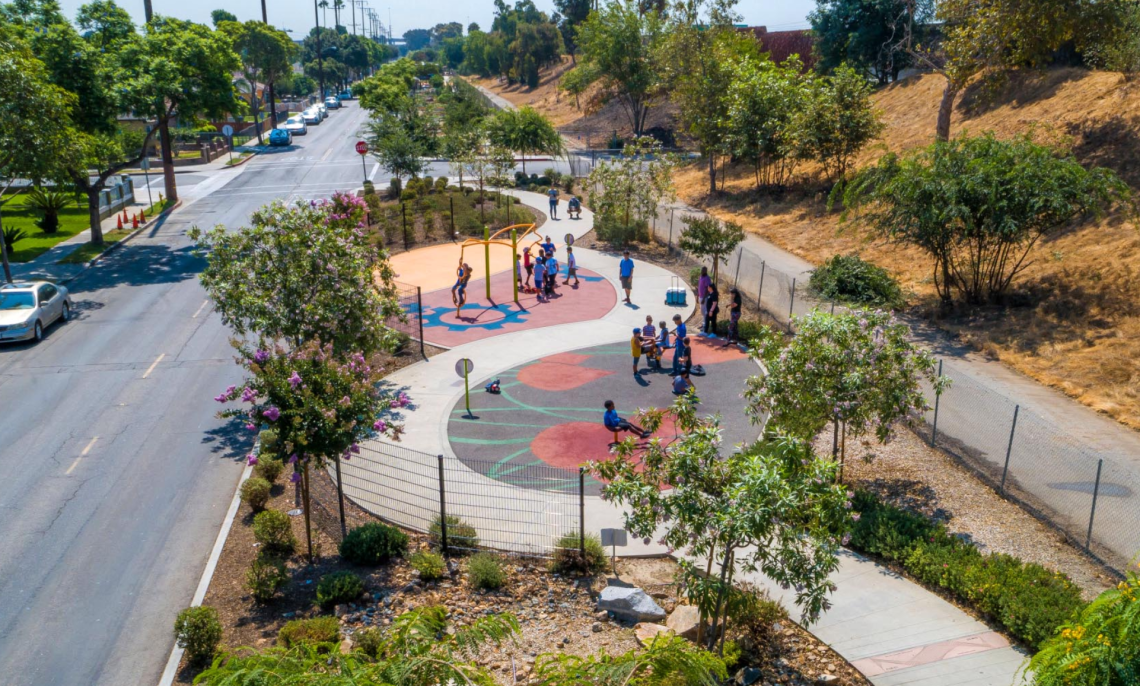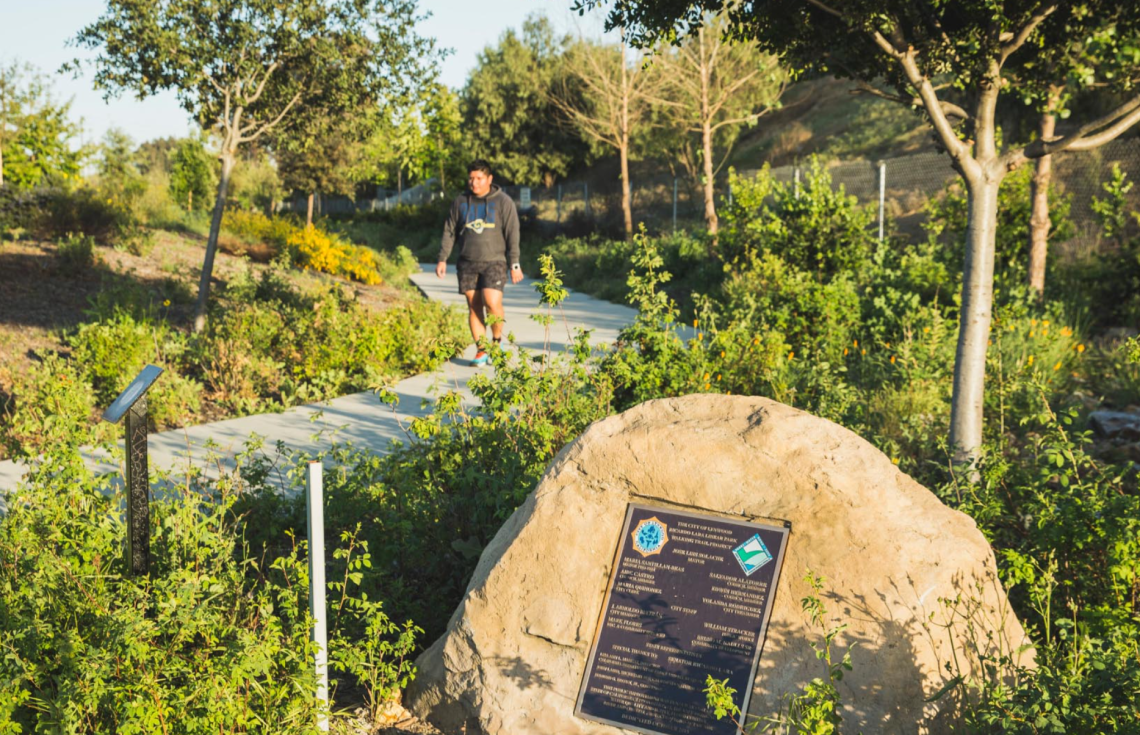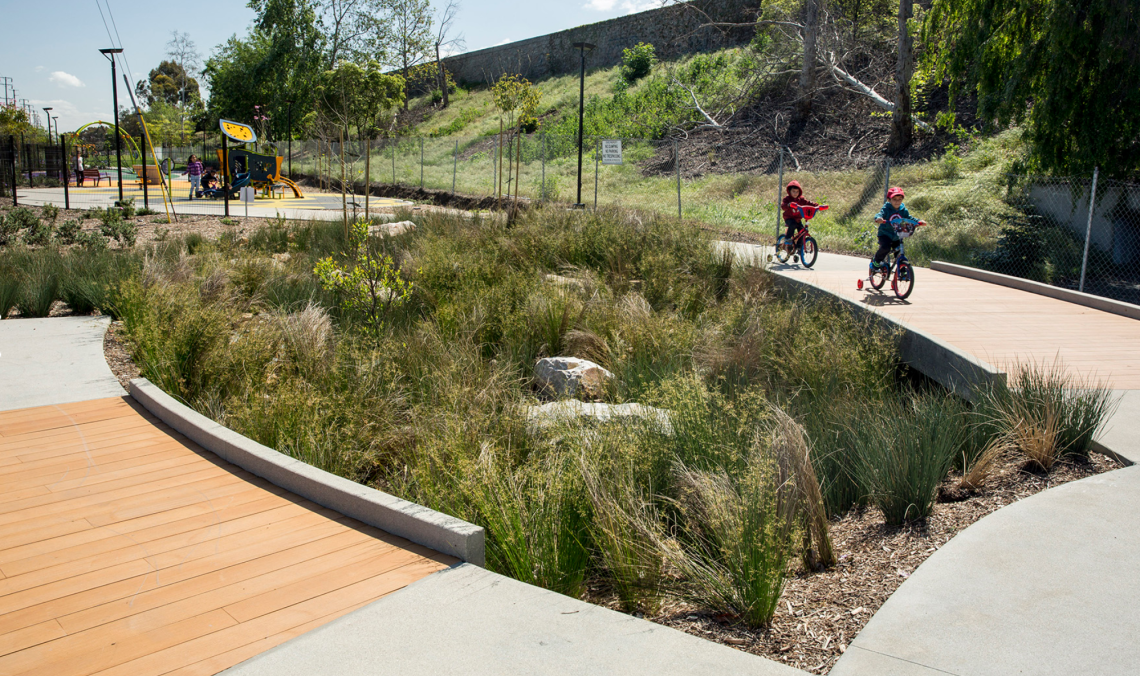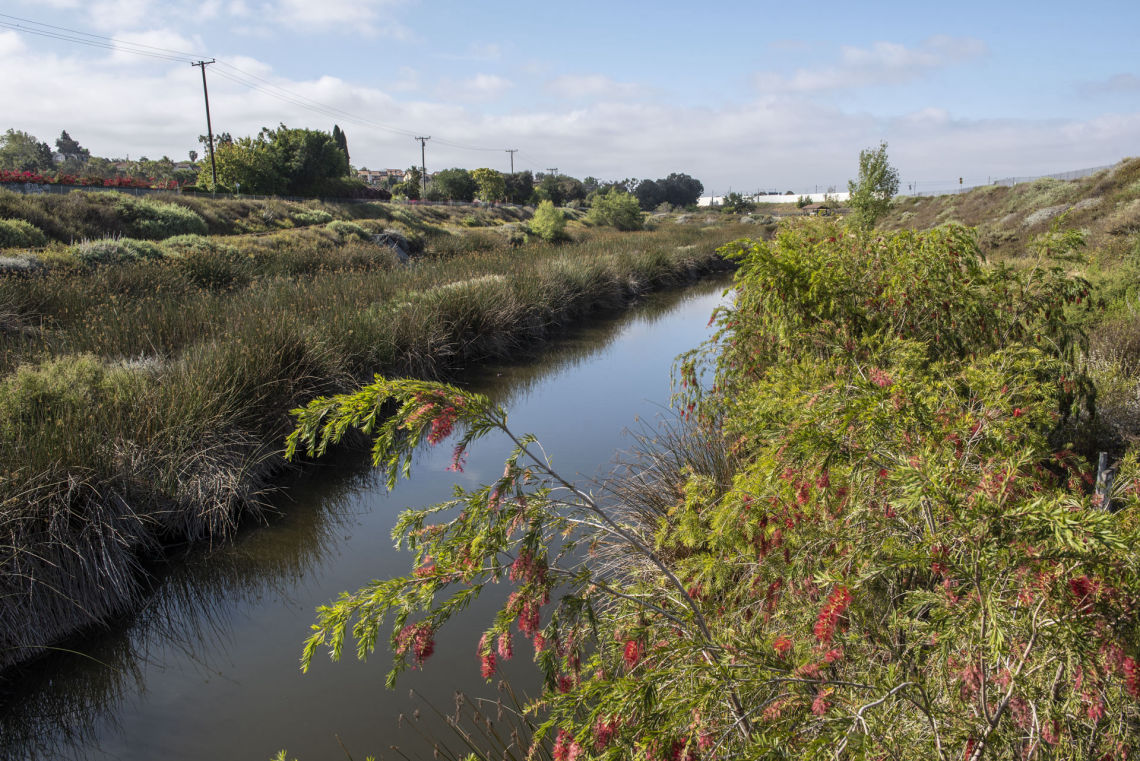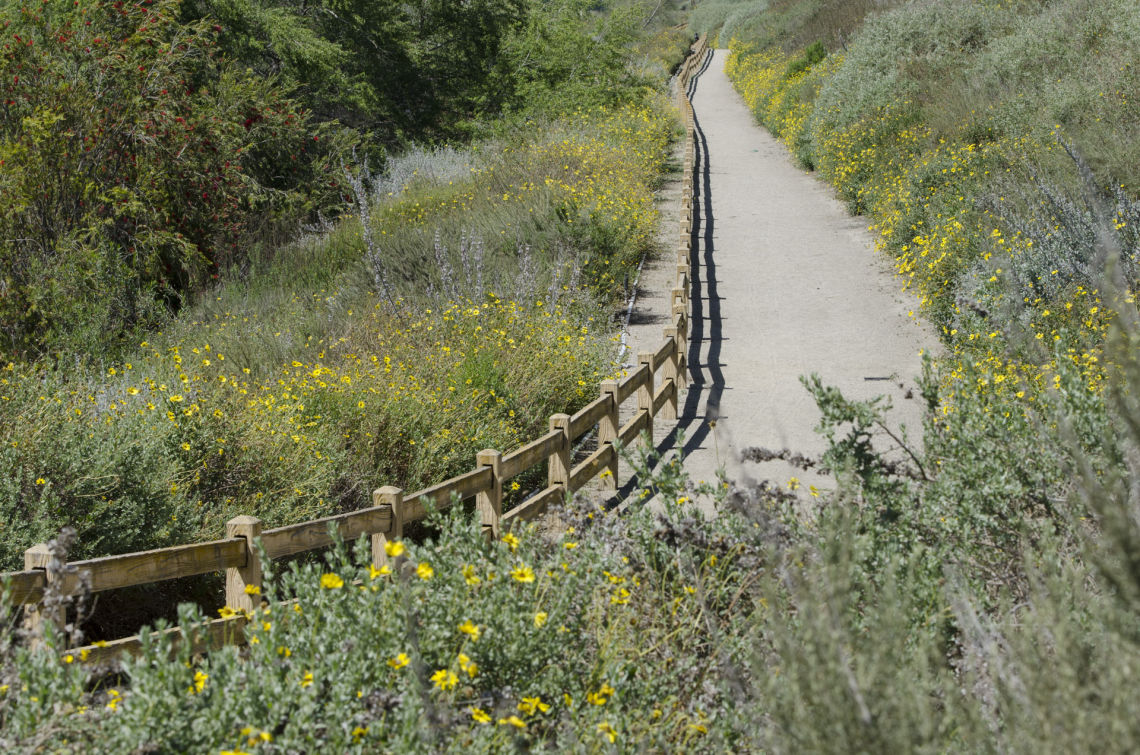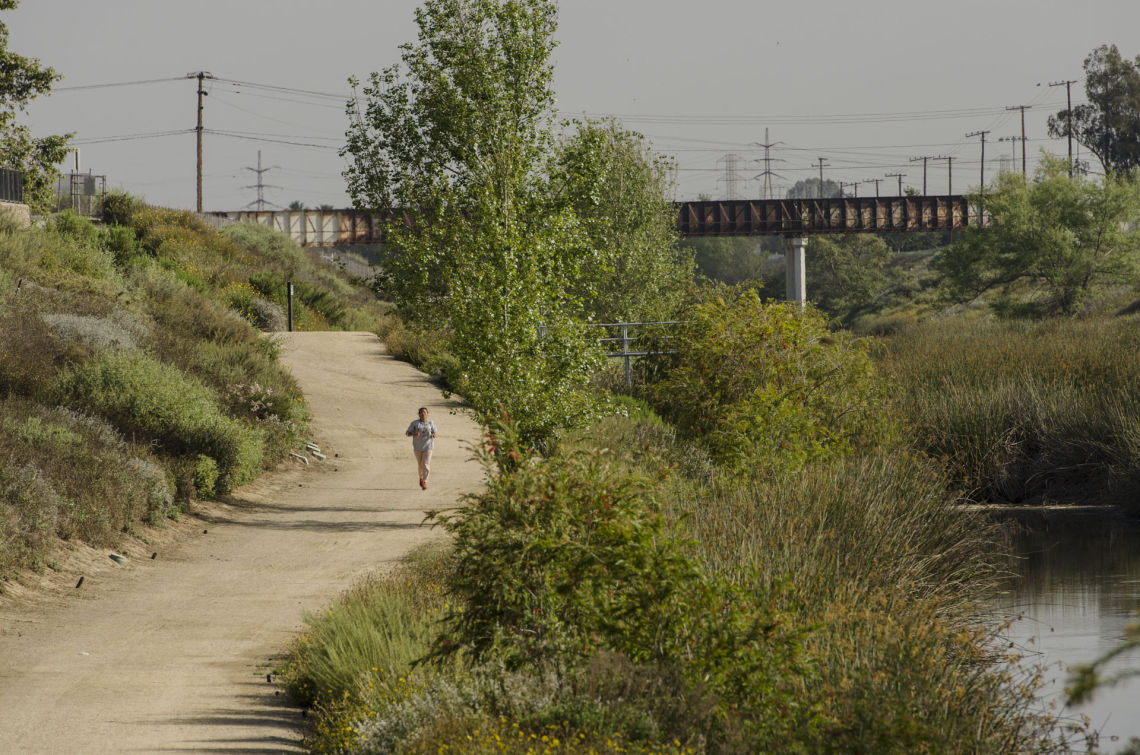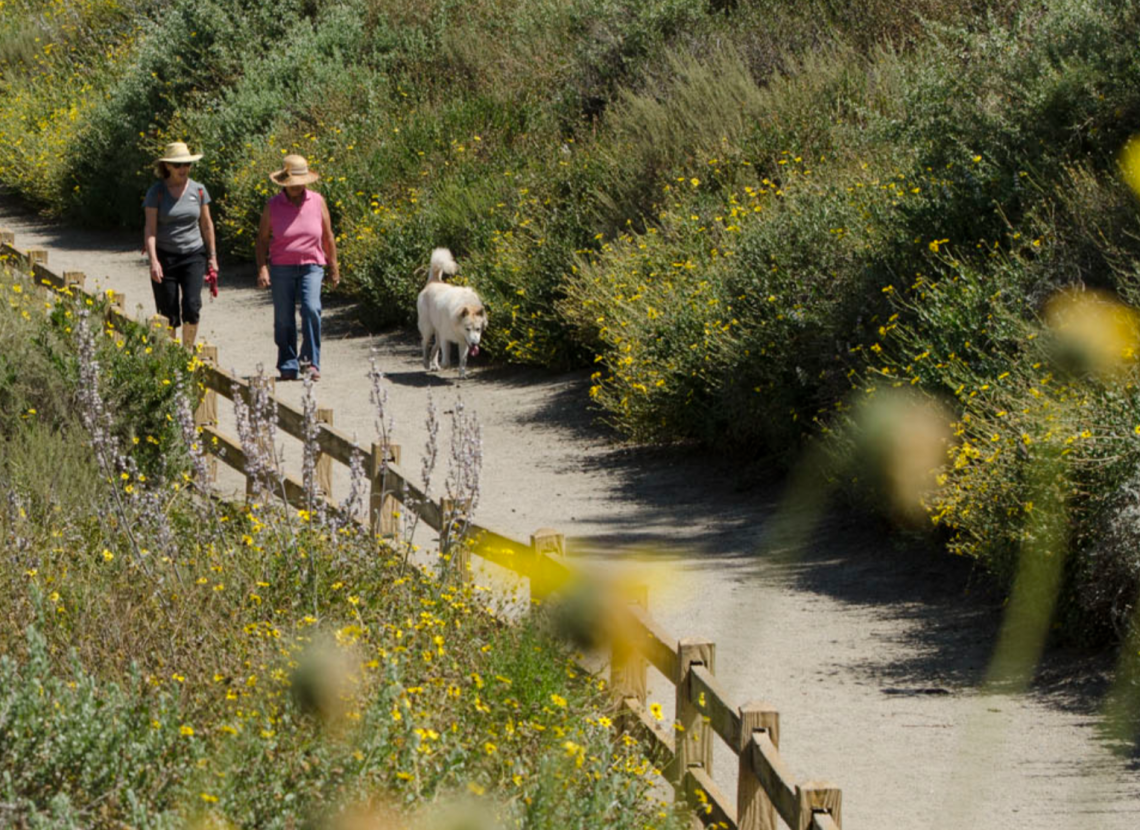Habitat, Parks, and Open Space
Creating Space For Nature
strategies sublist parksopenspace

Native Habitat Restoration
Gardens of locally native plants nourish our local insects and birds more than plants imported from elsewhere. Native plants are the plants that have evolved over thousands of years to thrive in our region with little additional maintenance or irrigation. They are better suited to our arid climate and offer beauty and aesthetic qualities that reflect the region's natural and cultural history.
Love their Beauty
↓Native flowers bloom in colors that span the whole range of the rainbow. The foliage of native shrubs ranges in color from dark emerald greens to dusty mellow yellows and browns, reflecting the beauty of California’s unique seasons.
They Take Care of Themselves
↓Native plants have evolved over thousands of years to survive in California’s unique climate conditions. After their first years in the ground, their deep root systems are able to tap water deep below ground. This is why native plants can be survive drought better than exotics. Minimal weeding is required, and fertilizer (which pollutes our waterways) is not needed at all!
Full Circle Ecosystem
↓Certain specialized insects can only digest native plants, and these insects in turn become food for hungry birds. Native plants are preferred by many migratory birds passing through our cities, who need this critical energy to make it to their breeding grounds during a long migrations of thousands of miles.
Edible Landscapes
& Parkways
Edible landscapes have been with us ever since the beginning of the human species. Growing food ties us to our roots. Eating from the landscape might be the most visceral way to understand our own place on earth and our connection to the larger ecosystems we depend on.
In densely populated neighborhoods, finding available land for edible gardening can be a challenge. However, there are sometimes unexpected opportunities in underutilized spaces near and around our homes. Parkways—the unused sliver of grass between the street and the sidewalk—is one such opportunity.
In 2015, the City of Los Angeles made it legal to grow food in parkway strips without a permit.
Different cities may have their own ordinances or require specific permits. But residents can advocate for their city to embrace edible landscapes and make it easier for people to grow their own food whereever they can.
Community Gardens
Many neighborhoods in Los Angeles are considered 'food deserts' — where residents need to travel long distances to purchase affordable, healthy food. In dense regions like the Gateway Cities, communities have organized to grow their own food in otherwise vacant lots. Community gardens makes local production of healthy food a collective experience. These spaces provide a way for renters and other residents without access to land a place to grow their own food, learn gardening techniques from their neighbors, and share their bounty.
Mini-Parks, Linear Parks, & Expanded Parks
Mini-Parks (or 'pocket parks') are smallscale parks or gardens that provide green space for local residents, close to where they live or work. They can be created on a single vacant lot or on other small, irregular pieces of land. Mini-parks make it possible for people to experience natural spaces when there is not a lot of available land.
Linear Parks are long, narrow public green spaces created along parkways and urban river corridors, under utility lines, or in unused portions of rail corridors. They can be part of a greenway or a standalone interstitial space in a city.
Expanded Parks create additional green space in existing parks. These expanded spaces can offer more opportunities for native landscaping and habitat, stormwater features, and new public amenities and programming.
Open Space Access
Some of the Gateway Cities' largest areas of open space—such as spreading grounds along our urban rivers—also suffer from lack of access. Opening up our open spaces helps bring the benefits of parks and green spaces to more people and closer to where they live.
greenscape title examples

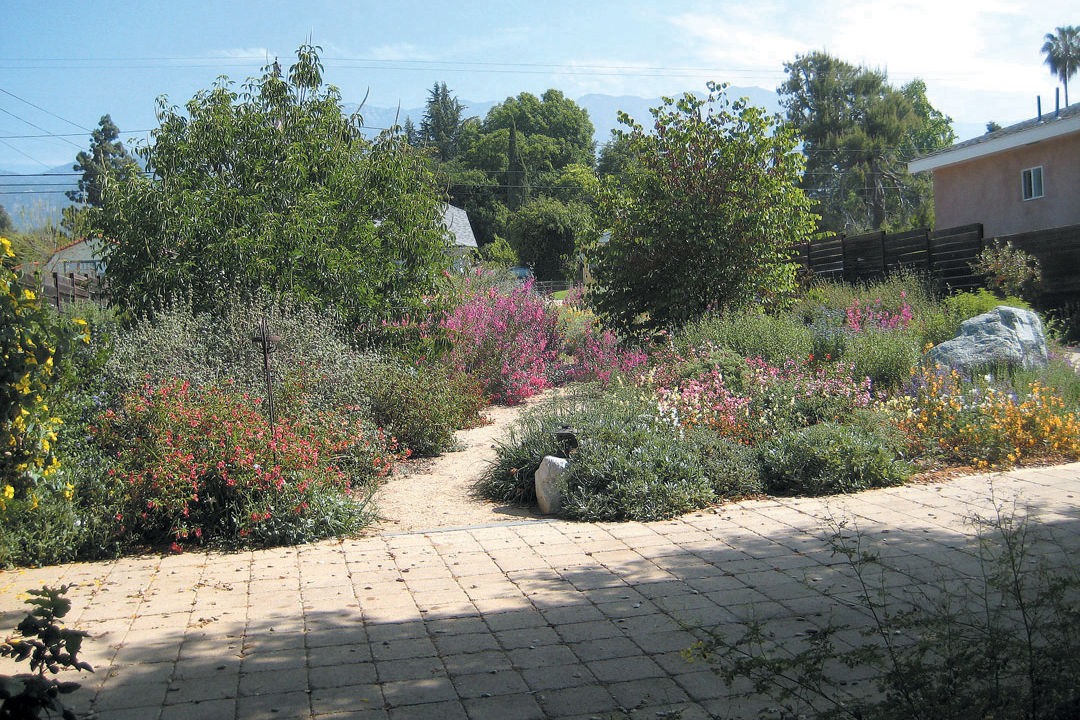
Demonstration gardens in Montebello, Whittier, Cerritos, South Gate and Cudahy incorporate many native plants.
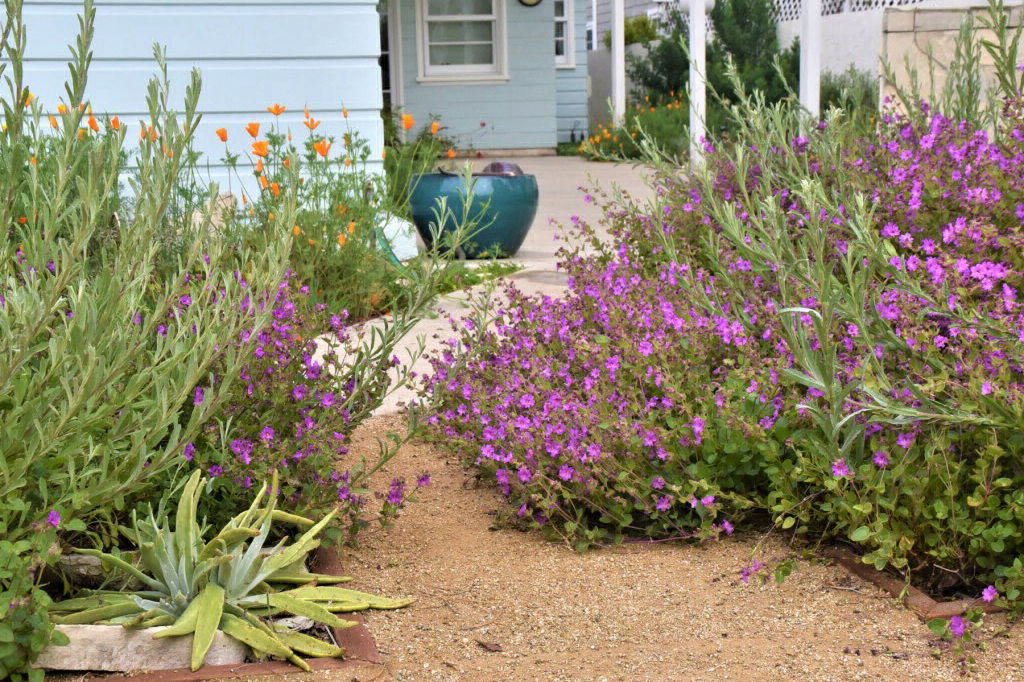
The annual spring garden tour organized by Theodore Payne Foundation is a chance to immerse yourself in wide variety of approaches to native gardening throughout the Los Angeles basin, including the Gateway Cities.
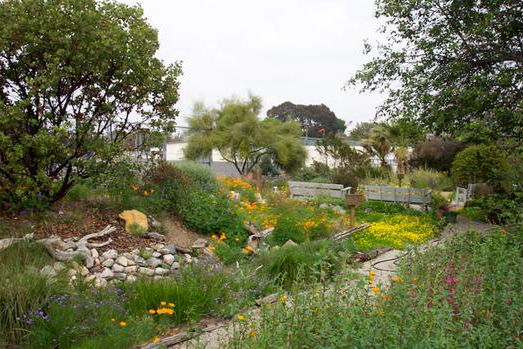
Prisk Elementary School Native Plant Garden is a miniature botanical garden showcasing the plants of California’s diverse ecosystems.
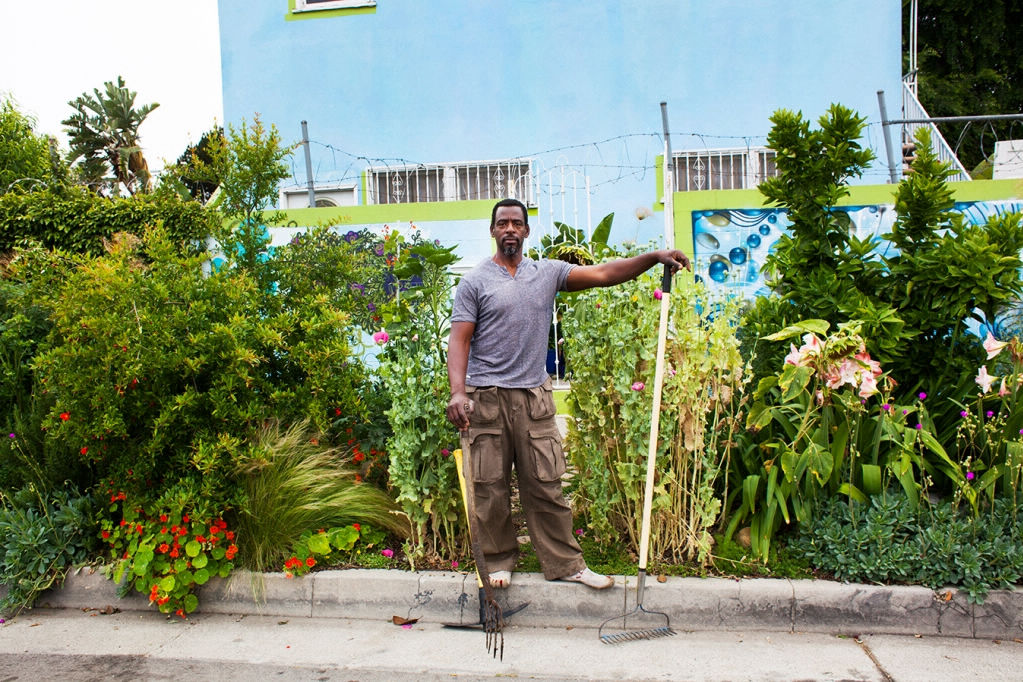
The Ron Finley Project: South Central LA’s “gangsta gardener” advocates growing food in public places to make communities healthier.
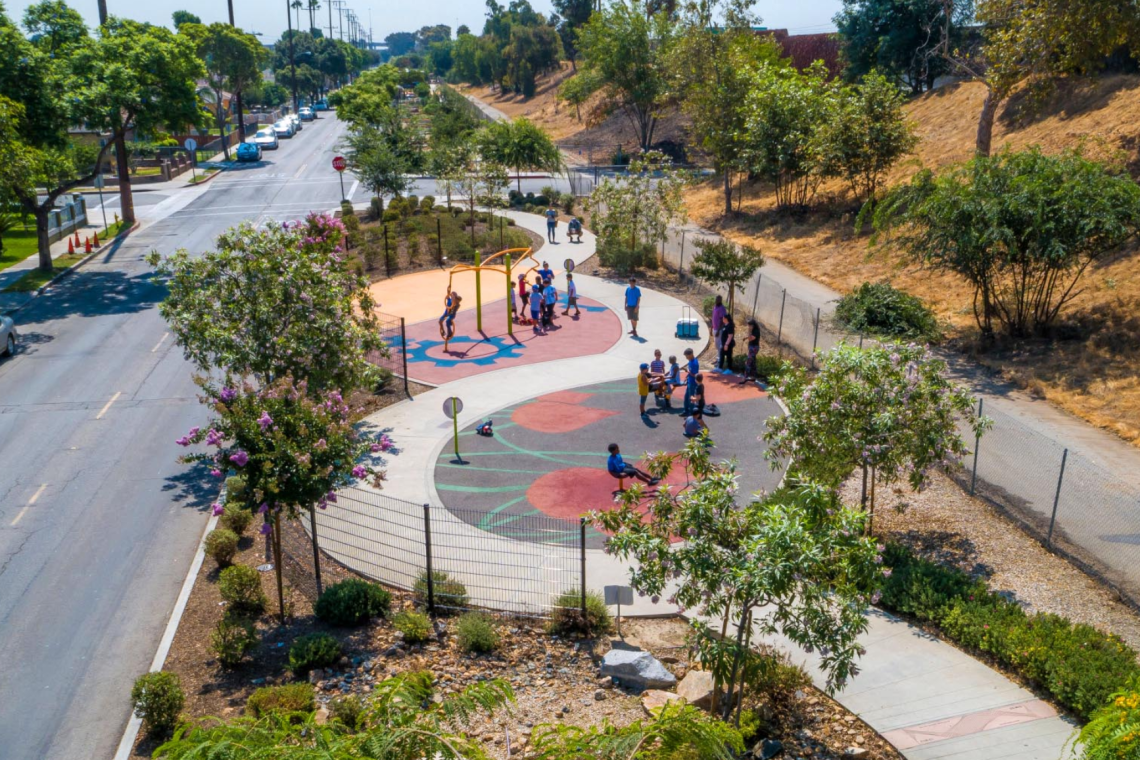
Ricardo Lara Linear Park is more than five acres of vacant lots along an I-105 freeway embankment transformed into a mile-long park that filters stormwater runoff, improves air quality, and provides multiple outdoor gathering spaces.
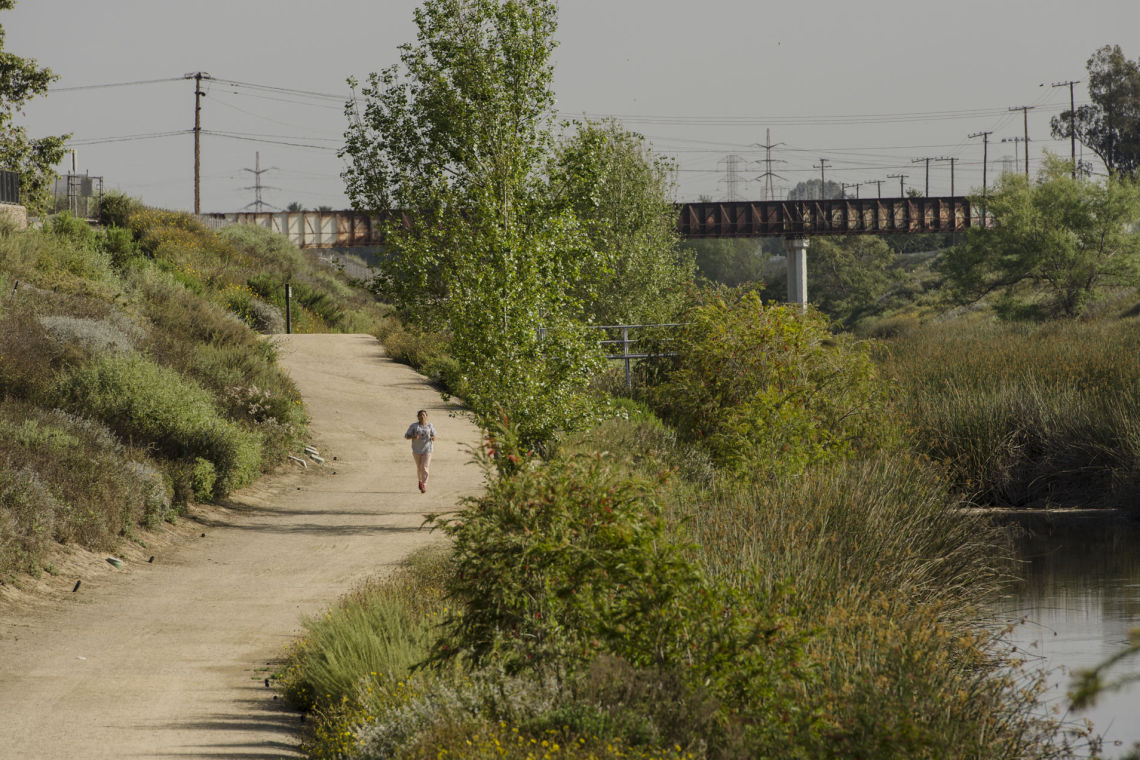
The Dominguez Gap Wetlands project converted an existing spreading ground basin into a multi-benefit wetlands along the Los Angeles River. Flows from the LA River and local urban runoff are routed through the basin to sustain a year-round habitat for plants and native wildlife. This open space also provides public recreational amenities, such as an equestrian trail, bike path and walkways.
_______
Have a successful example you'd like featured in this vision plan? Fill out this form and let us know!
greenscape title resources

• Gardening With Native Plants. California Native Plant Society.
• Native Plant Guides. Theodore Payne Foundation.
• Ten Native Plants for a California Garden. Las Pilitas Nursery.
• Be Water Wise (Resources). Metropolitan Water District.
• Native Plant Garden Planner. China Basin Water Conservation District.
• Plants for Native Habitats in Southern California. U.S. Fish and Wildlife.
• California Botanic Garden. All native garden and plant nursery.
• Start a New Community Garden. Los Angeles Community Garden Council.
• Find a Community Garden. Los Angeles Community Garden Council.
Relevant Non-Profit Organizations
• From Lot to Spot
• North East Trees
• Amigos de los Rios
• Farm LA
• Edible Schoolyard Project
Made with ❤️ by TreeStack.io

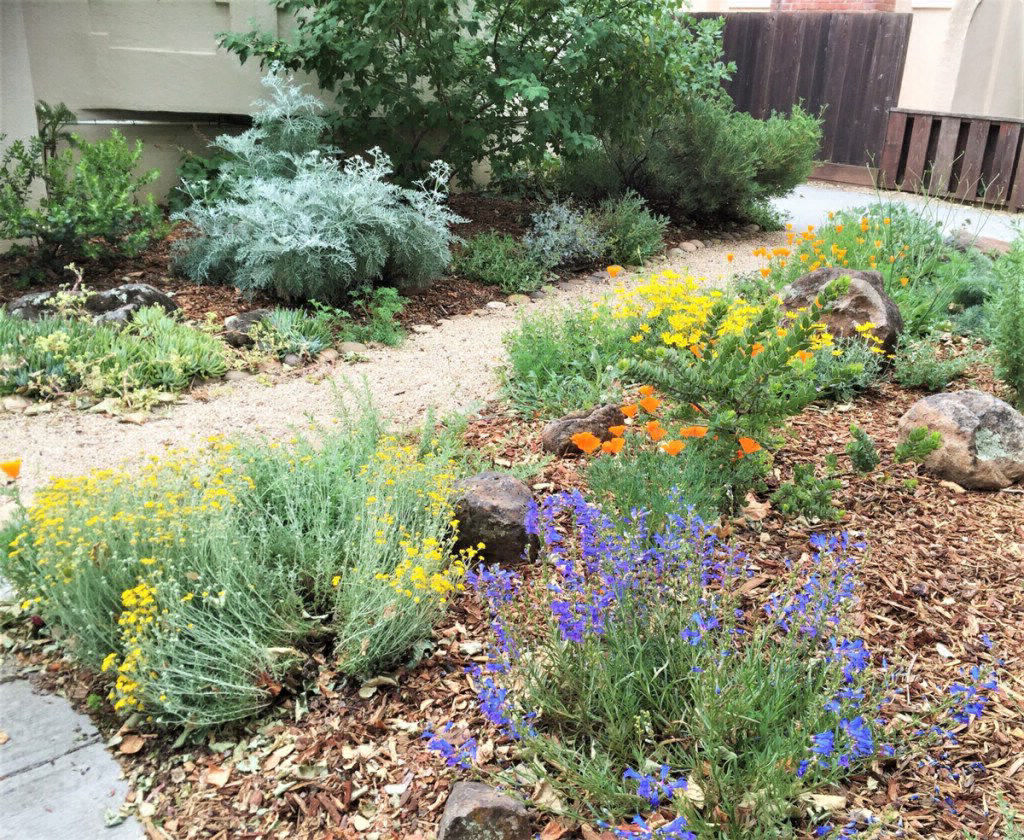 California Native Plant Society
California Native Plant Society